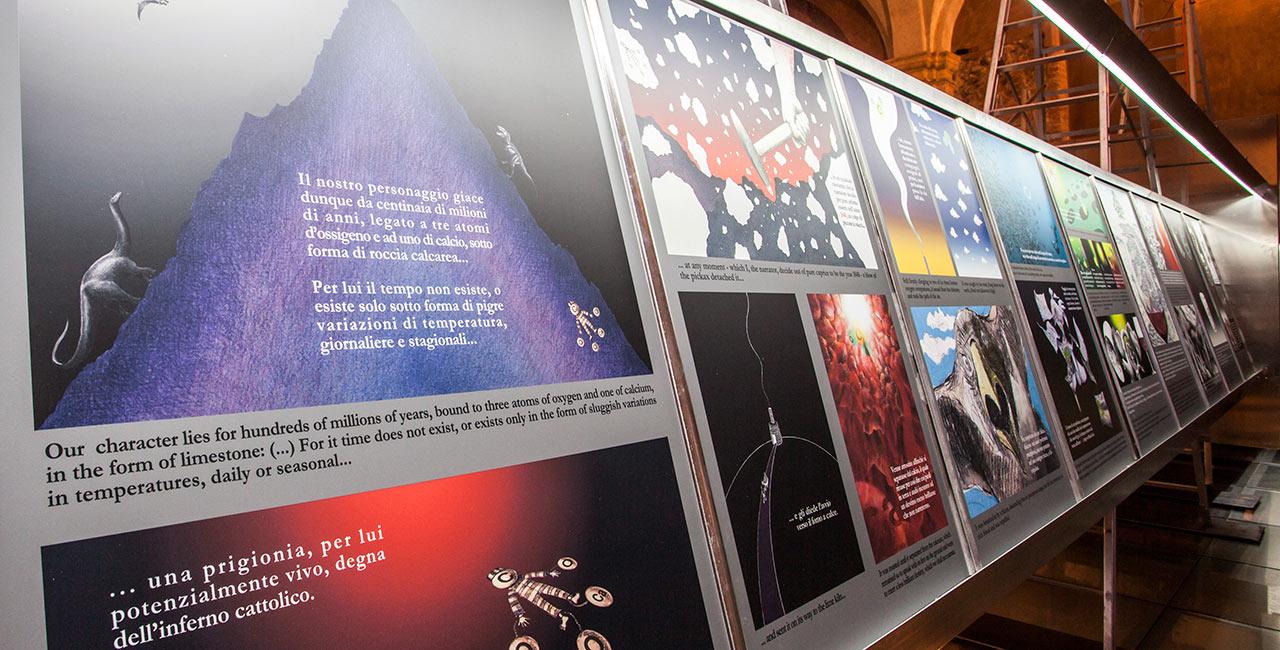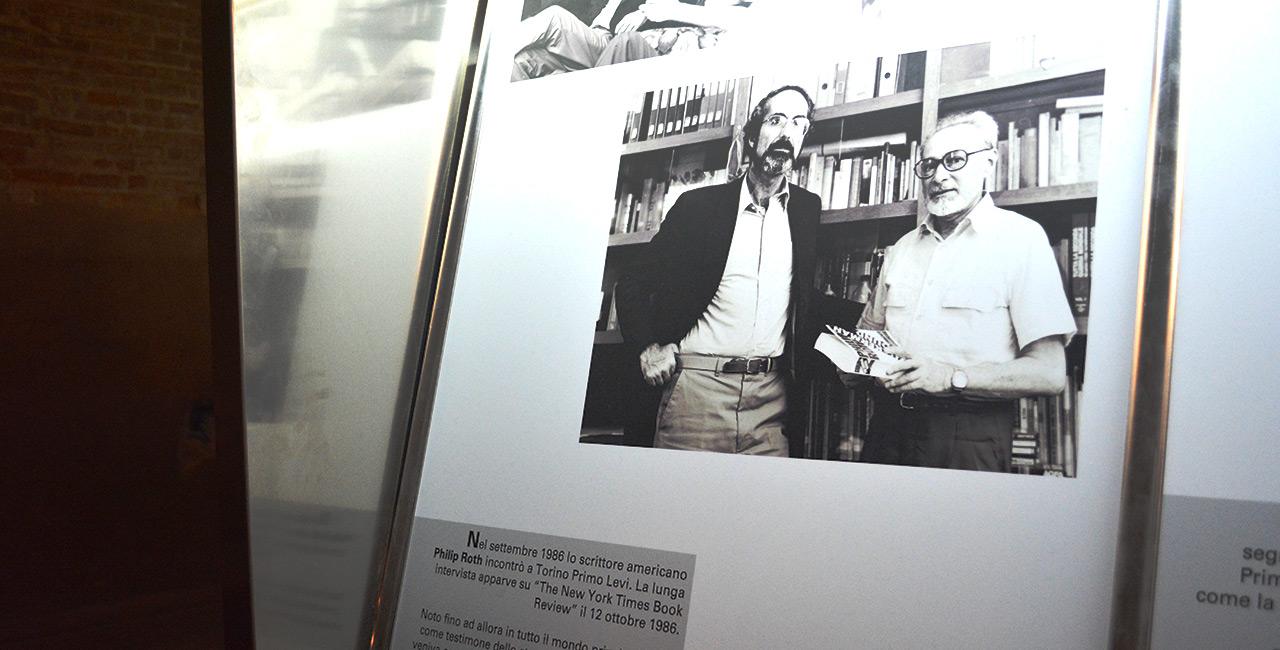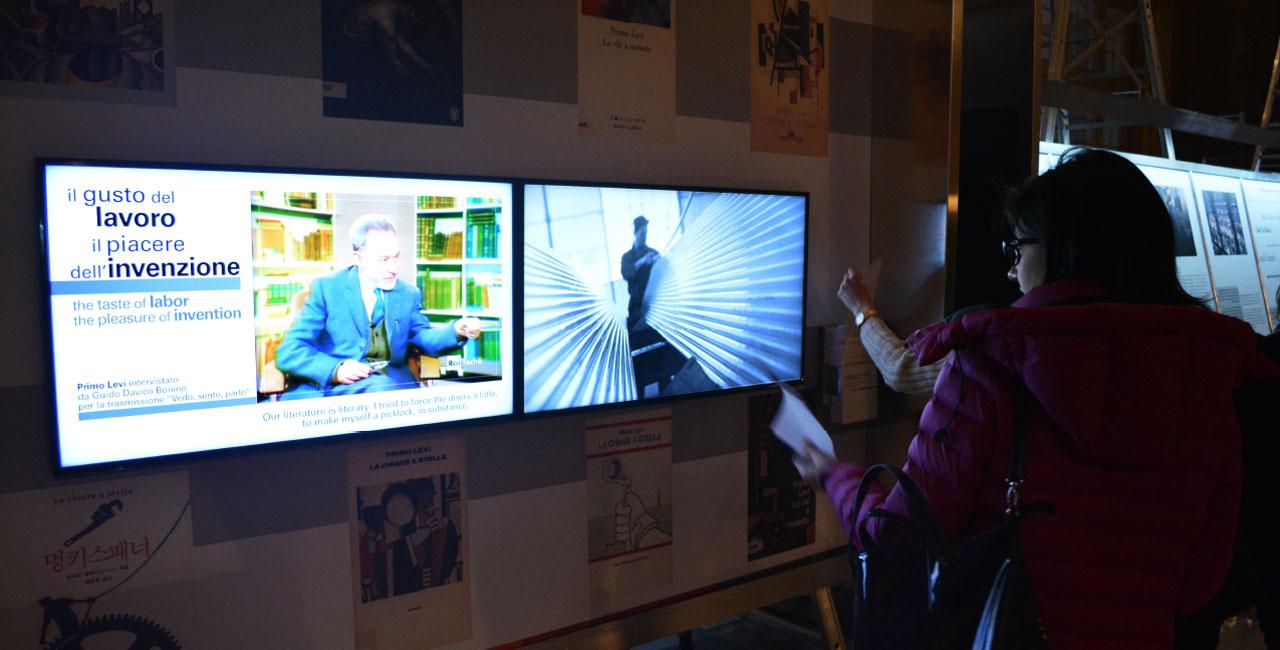
Sections
“Carbon” is the last story in the collection, The Periodic Table (1975). It describes the journey of a carbon atom over the millennia and through the space of the planet. Carbon’s extraordinary transformations make it the leading figure in the birth and development of life on earth. “Carbon” is a story that Levi had already imagined during his time in prison at Auschwitz and that became one of his first literary dreams. In the exhibit, a series of paintings drawn by the artist Yosuke Taki leads visitors along that journey, revealing Taki’s very personal style, where colors essentially emblematic, introduce the visitors into the arcane and hidden angles of nature, animate and inanimate.



A large map of Europe offers the itinerary of the the itinerary of the journey from the camp at Fossili to Auschwitz, that Primo Levi was forced to undertake after his arrest in Aosta Valley in 1943. The same map indicates the route throughout Europe that Levi took to return home. The context of that journey is described in two videos projected right over the map.
The direction of the visit continues along a tunnel, where Levi’s words alone “illuminate” the realty of Auschwitz.
Immediately after that, several panels enable the visitors to follow the most meaningful passages of testimony about the concentration camp. A video helps visitors to place Levi’s testimony within the wider context of the discussion about the extermination.


In the section dedicated to Levi as writer, a rich succession of images and quotations illustrates the various worlds that he imagined - stories, novels, poems, and essays. As visitors pass through this section, they can be struck by the attention Levi paid to words ranging, from his search of a distinctive style to his “strenuous clarity” and interest in linguistic games. Through a video interview, Levi himself explains several features of his activity as a writer to the visitors.



The section on Levi as chemist begins with a reproduction of the periodic table in the university institute where he studied in the 1940s. Facing this, an installation features another periodic table this one showing only the 21 elements that coincide with the titles of the stories in The Periodic Table, the work in which Levi intended to go over the fundamental passages of his life and his profession as a chemist.
After this, the path of the visitors features, in chronological order, the outstanding moments of his relationship with chemistry from his school years to Auschwitz, to his long experiences at SIVA, the paint factory where he worked until he retired


The main topic of the fifth section is the relationship between the hand and the brain, already a close and decisive relationship in the craft of chemistry, where sensorial capacity and manual skill play essential roles. However, Levi cultivated this relationship in other ways too, as can be seen in the images of the figures that Levi constructed with intersecting copper wires, scrap materials that he took home from SIVA.
As the path of the exhibit nears the sixth section, a large panel with photographs of those decades reminds visitors of Primo Levi’s bond with his Jewish origins.


A large installation with two screens opens this section. On the first, there is a video where Levi discusses The Wrench and its protagonist, Tino Faussone, a rigger of metal towers and bridges.
In the second, a sequence of images describes crafts, ancient and modern.
The sixth section develops around work, a topic central to Levi’s thought, taken in relationship with the concrete reality of crafts of all kinds as well as with the meaning of work in human life.
The visit ends with a video-biography of Levi that enables visitors to put together the sections of the exhibit into a single portrait.


